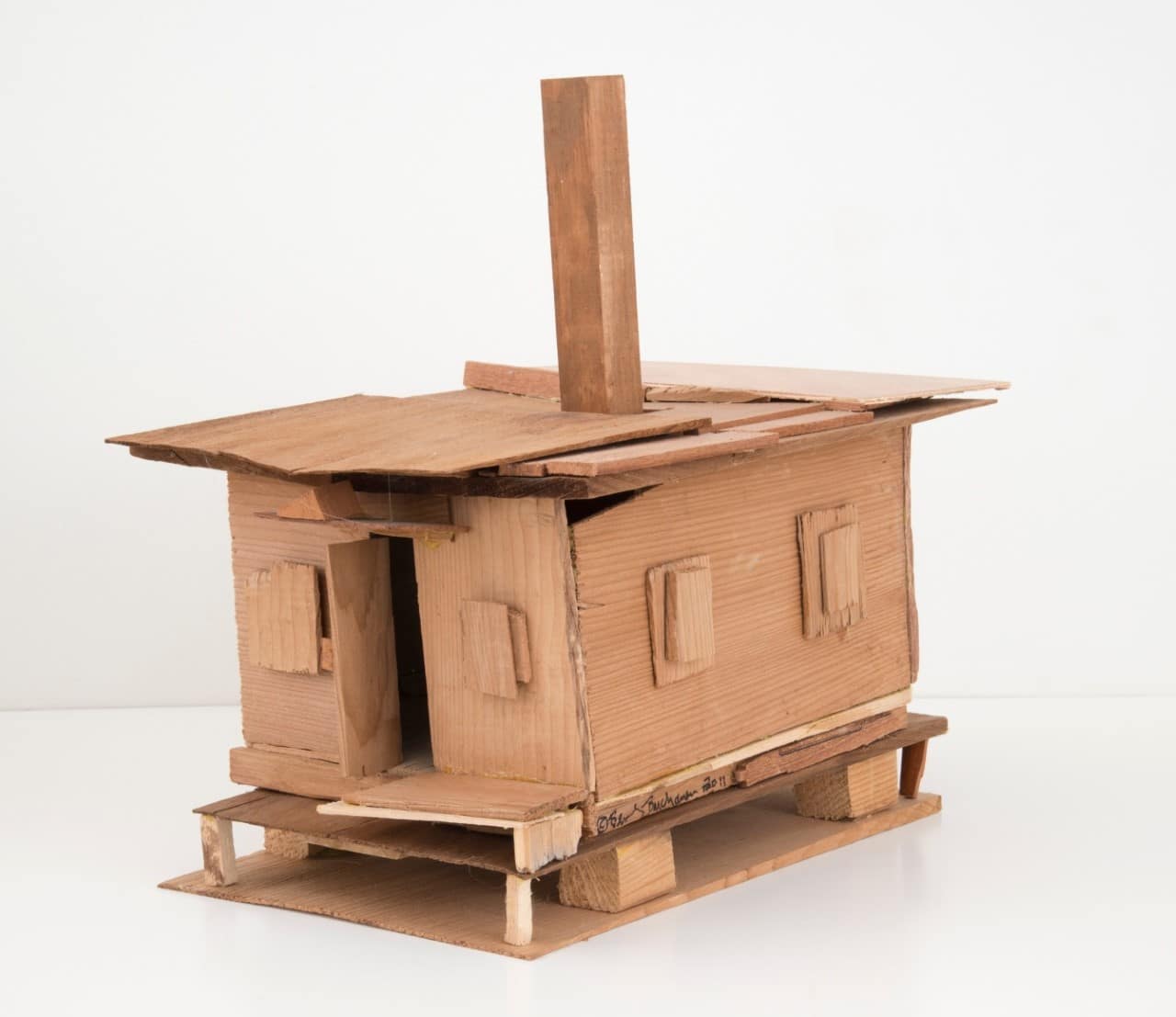Beverly Buchanan: Here I am; I’m Still Here
For the past two years, our Writing Prize has attracted a large number of thoughtful texts from participants all over the world. This year we partnered with the Architecture Foundation to sponsor one of their three writing prize categories. The Drawing Matter category, titled ‘Architecture and Representation’, invited entrants to submit a short piece of writing on a drawing or series of drawings that they had studied or made.

Unpainted wood of different sizes are glued together to form a small model dwelling. A chimney protrudes from the flat roof and the windows are boarded up, with an open door for access and insight. The object is easy to describe but it is rather difficult to pin down. The composition veers between installation and dismantlement and seems to be charged with emotions and associations; it could be a model of an imagined structure or a scaled-down reproduction of an existing one, documentation or improvisation.
Beverly Buchanan’s series of model shacks are animate portraits; specific yet abstract. Materially they stand for themselves, and at the same time they represent places where structures like these, and the people building and using them, might be found. Some of her titles refer to actual or fictional people, like ‘Tribute to Juanita’, other works are accompanied by written legends. Histories and stories, materials and memories, and hopes and dreams are explored in the work, which is based on the artist’s own experiences and observations in the American Deep South. Hands-on research into dwellings is interwoven with the politics of race, gender, identity, and memory.
Buchanan was born in North Carolina in 1940, then studied in New York and worked in the health sector. In 1971 she decided to leave this career to focus on her artistic practice. She studied at the Art Students League and knew and was interested in movements like postminimalism, land art and feminism. To describe her as an outsider or folk artist – as some have – does not do her biography or work justice.
Whatever the medium (she was a sculptor, painter and photographer) her work thematises and investigates places of social inequalities and injustices, historical and current. ‘A lot of my pieces have the word “ruins” in their titles because I think that tells you this object has been through a lot and survived – that’s the idea behind the sculptures […] it’s like: Here I am; I’m still here!’. On another level, they evoke questions about representation in the art world, canonisation and marginalisation, who is present and who is represented in the sphere of architecture, and who buildings are designed by and for. What does it mean to exhibit these works in institutional spaces? What emerges when they’re discussed in the context of architectural theories? What’s the difference between so-called outsider art and art, vernacular architecture and architecture? Who’s there; who’s speaking?
Clara Maria Blasius is an architect and curator currently based in Copenhagen.
This text was selected as one of the runners-up in the Drawing Matter category, ‘Architecture and Representation’, of the Architecture Foundation Writing Prize 2022.

– Matthew Blunderfield and Mabel O. Wilson